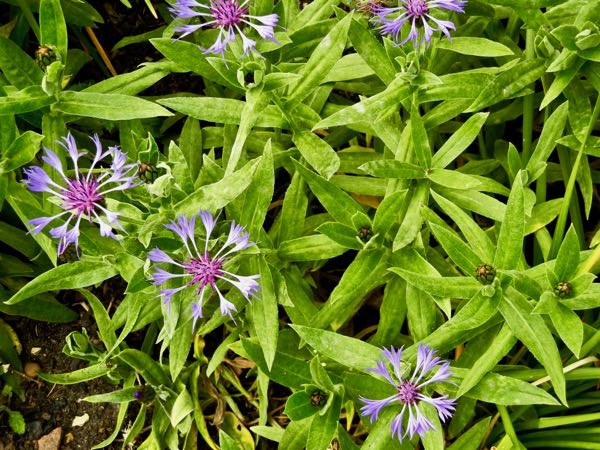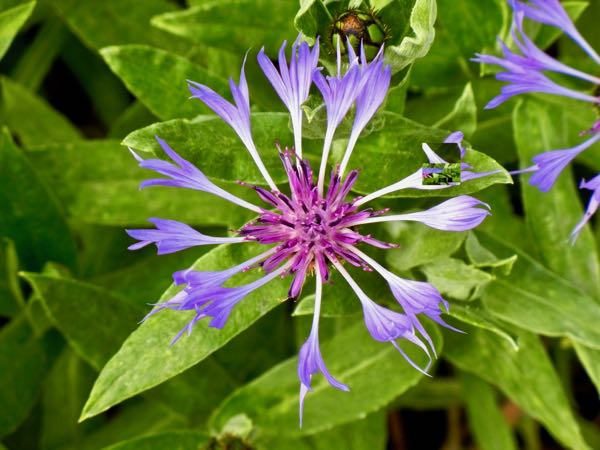Centaurea montana, also known as Cyanus montana, Perennial Cornflower, Mountain Bluet, Mountain Century, Mountain Cornflower, Bachelor’s Button, Montane Knapweed, or Great Blue-bottle, is a captivating perennial plant belonging to the Asteraceae family. Here are some additional details to expand on its characteristics and growing requirements:
Centaurea montana is a rhizomatous perennial, meaning it grows from underground stems called rhizomes. It is native to Europe and thrives in the mountainous regions of Southern Europe. The name “montana” is derived from the Latin word for mountains, highlighting its natural habitat.
Centaurea montana can reach a height of around 70cm or 28 inches. Unlike its annual relative, Centaurea cyanus, which typically has multiple flower heads, Centaurea montana usually produces a single flower head per stem. It blooms during the spring and summer, adorning the garden with its charming and vibrant flowers.

How to grow Centaurea Montana:
Soil and Sun Requirements: Centaurea montana is adaptable to various soil types, including both acidic and alkaline soils. However, it thrives best in moist, well-drained soil conditions. Planting Centaurea montana in a sunny location is ideal, as it prefers full sun exposure. However, it can tolerate partial shade, particularly if planted beneath deciduous trees. This allows the plant to absorb and store nutrients from the sun, even during the winter months.
Watering and Drought Tolerance: Centaurea montana is known for its ability to tolerate drought conditions once established. However, it is important to note that while it can withstand dry periods, it does not fare well in waterlogged or overly saturated soils. Adequate drainage is essential to prevent root rot and other moisture-related issues.
Propagation: Centaurea montana can be propagated either by seeds or through division. For seed propagation, collect mature seeds from the flower heads and sow them in well-prepared soil during autumn. Division can also be performed in autumn, with established clumps being carefully divided into separate plants and replanted in suitable locations.
Pests and Diseases: Centaurea montana is generally considered a pest-free plant. However, it is important to keep an eye out for powdery mildew, a common fungal disease that can affect its foliage. Regular inspection, proper spacing, and good air circulation can help prevent or minimize the occurrence of powdery mildew.
Centaurea montana‘s remarkable blue flowers and its ability to thrive in various soil conditions make it a beautiful addition to any garden. Whether planted in borders, mixed beds, or as a focal point, this perennial cornflower brings charm and color to the landscape. Its tolerance to drought and resistance to pests make it a low-maintenance choice for both beginner and experienced gardeners.

Also, read about Centaurea cyanus



